#Tanit
Explore tagged Tumblr posts
Text
“I,” said a voice—“I am Desire. In Greece I am revered, and there I am Aphrodite. In Italy I am Venus; in Egypt, Hathor; in Armenia, Anaitis; in Persia, Anâhita; Tanit in Carthage; Baaltis in Byblus; Derceto in Ascalon; Atargatis in Hierapolis; Bilet in Babylon; Ashtaroth to the Sidonians; and Aschera in the glades of Judæa. And everywhere I am worshipped, and everywhere I am Love. I bring joy and torture, delight and pain. I appease and appal. It is I that create and undo. It is I that make heaven and people hell. I am the mistress of the world. Without me time would cease to be. I am the germ of stars, the essence of things. I am all that is, will be, and has been, and my robe no mortal has raised. I breathe, and nations are; in my parturitions are planets; my home is space. My lips are blissfuller than any bloom of bliss; my arms the opening gates of life. The Infinite is mine. Mary, come with me, and you shall measure it.”
--Edgar Saltus, "Mary Magdalen"
#aphrodite#venus#hathor#anaitis#anahita#tanit#baaltis#derceto#atargatis#bilet#ashtaroth#asherah#universal#love#stars#world#eternal#space#life#infinite
232 notes
·
View notes
Text

It is good to worship the Queen of Heaven & Earth
28 notes
·
View notes
Text
About Tanit
I recently posted about how people should be looking more into other gods outside of the Greco-Roman pantheons. If you follow me for quite some times, you will also have noted I posted a bunch of loose translation from the French Dictionary of literary myths (which is truly a great reference). Well, I wanted to share with you today a loose translation – well, more of an info-mining at this point – of an article about a goddess that people often ignore the existence of, despite being located right next to Ancient Greece and Rome, and being involved in the history of the Roman Empire. And this goddess is Tanit.
Written by Ildiko Lorinszky, the article is organized in two – at first it takes a look and analysis at the mythological Tanit, at who and what she likely was, how her cult was organized all that. The second part, since it is a Dictionary of LITERARY myths, takes a look at the most prominent and famous depiction of Tanit in French literature – that is to say Flaubert’s famous Salammbô. (If you recalled, a long time ago I posted about how a journalist theorized in an article how Flaubert’s Salammbô was basically an “epic fantasy” novel a la Moorcock or Tolkien long before “fantasy” was even a genre)
Part 1: Tanit in mythology and archeology
Tanit was the patron-goddess of the city of Carthage. Considered to be one of the avatars o the Phoenician goddess Astarte, Tanit’s title, as found on several Punic engravings, was “The Face of Baal” – a qualification very close to how Astarte was called in Sidon and Ugarit “The Name of Baal”. These titles seem to indicate that these two goddesses acted as mediators or intermediaries between humanity and Baal.
Tanit is as such associated with Baal, the vegetation god, but sometimes she is his wife, other times she is simply his paredra (companion/female counterpart). She seems to be the female power accompanying the personification of masculinity that is Baal, and as such their relationship can evoke the one between Isis and Osiris: the youthful sap of the lunar goddess regularly regenerates the power of the god. This “nursing” or “nourishing” function of Tanit seems to have been highlighted by the title she received during the Roman era: the Ops, or the Nutrix, the “Nurse of Saturn”. Goddess of the strengthened earth, Tanit is deeply tied to agrarian rituals: her hierogamy with Baal reproduces in heaven the birth of seeds on earth. Within the sanctuaries of Tanit, men and women devoted to the goddess practiced a sacred prostitution in order to favorize the fecundity of nature. The women tied to the temple were called “nubile girls”, while the men working there were called “dogs” to highlight how completely enslaved they were to the goddess. We know that the prostitutes of both sexes brought important incomes to the temple/
The etymology of Tanit (whose name can also be called Tannit or Tinnit) is obscure. The most probable hypothesis is that the Phoenico-Punic theonym “Tnt” is tied to the verb “tny”, which was used in the Bible to mean “lamenting”, “wailing”, “crying”. According to this interpretation, the “tannît” is originally a “crier”, a “wailer”, and the full name of Tanit means “She who cries before Baal”. As such, the Carthaginian goddess might come from a same tradition as the “Venus lugens��.
According to some mythographers, Tanit (or Astarte) was the supreme goddess of Carthage, and might have been identical to the figures of Dido and Elissa. As in, Dido was in truth the celestial goddess, considered as the founder of the city and its first queen. According to this hypothesis, the suicide of Dido on a pyre was a pure invention of Virgil, who took this motif from various celebrations hosted at Carthage. During these feasts-days, images and depictions of the goddess were burned The word Anna would simply mean “clement”, “mild”, “merciful” – the famous Anna, sister of Dido, is thought to have been another Punic goddess, whose cult was brought from Carthage to Rome, and who there was confused with the roman Anna Perenna, a goddess similar to Venus. Varro claimed that it was not Dido that burned on the pyre, but Anna, and according to this angle, Anna appears as a double of Dido – and like her, she would be another manifestation of the goddess Tanit. Anna’s very name reminds of the name “Nanaia”/”Aine”, which was a title given to Mylitta, yet another manifestation of Tanit.
The sign known as the “sign” or “symbol of Tanit” seems to be a simplified depiction of the goddess with her arms open: it is a triangle (reduced to a trapezoid as the top of the triangle is cut) with an horizontal line at its top, an a disc above the horizontal line. This symbol appears throughout the Punic world on monuments, steles, ceramics and clay figurines.
Part 2: The literary Tanit of Flaubert
Gustave Flaubert’s novel Salammbô is probably where the goddess reappears with the most splendor in literature. While her essence is shown being omnipresent throughout the Punic world, Tanit, as the soul of the city, truly dwells within the town’s sanctuary, which keeps her sacred cloak. The veil of the goddess, desired by many, stolen then regained throughout the plot, plays a key role within the structure of this very enigmatic text, which presents itself as a “veiled narrative”.
The town and its lands are filled with the soul of the “Carthaginian Venus”. The countryside, for example, is filled with an erotic subtext, sometimes seducing, sometimes frightening – reflecting the ambiguity of the goddess. The landscape is all curves, softness, roundness, evoking the shapes of a female body – and the architecture of both the city-buildings and countryside-buildings are described in carnal ways. Within Salammbô, Flaubert describes a world where the spirit and the flesh are intertwined – the female world of Carthage is oppressed by an aura mixing lust with mysticism; and through the erotic nature creeps both a frightening sacred and an attractive morbidity. For death and destruction is coming upon Carthage.
The contradictory nature of the goddess appears as early as the very first scene of the novel, when the gardens of Hamilcar are described. The novel opens on a life-filled landscape: the gardens of the palace are a true Land of Eden, with an abundant vegetation filled with fertility symbols. The plants that are listed are not mere exotic ornaments: they all bear symbolic and mythological connotations. The fig-tree, symbol of abundance and fecundity ; the sycamore, “living body of Hathor”, the tree of the Egyptian moon-goddess ; the grenade, symbol of fertility due to its multiple seeds ; the pine tree, linked to Attis the lover of Cybele ; the cypress, Artemis’ tree ; the lily, which whose perfume was said to be an aphrodisiac ; the vine-grapes and the rose… All those plants are linked to the moon, that the Carthaginian religion associated with Tanit. Most of these symbols, however, have a macabre touch reflecting the dark side of the goddess. The cypress, the “tree of life”, is also a funeral tree linked to the underworld ; the coral is said to be the same red as blood, and was supposedly born from the blood-drops of Medusa ; the lily symbolizes temptation and the unavoidable attraction of the world of the dead ; the fig-tree just like the grenade have a negative side tied to sterility… The flora of this passage, mixing benevolent and malevolent attributes, already depict a world of coexisting and yet opposed principles: fertility cannot exist without sterility, and death is always followed by a renewal. The garden’s description introduces in the text the very cycles of nature, while also bringing up the first signs of the ambivalence that dominates the story.
The same union of opposites is found within the mysterious persona of Tanit. The prayer of Salammbô (which was designed to evoke Lucius’ lamentations to Isis within Apuleius’ Metamorphosis) first describes a benevolent goddess of the moon, who fecundates the world : “How you turn, slowly, supported by the impalpable ether! It polishes itself around you, and it is the movement of your agitation that distributes the winds and the fecund dews. It is as you grow and decrease that the eyes of the cats and the spots of the panthers lengthen or shrink. The wives scream your name in the pains of labor! You inflate the sea-shells! You make the wines boil! […] And all seeds, o goddess, ferment within the dark depths of your humidity.” As a goddess presiding to the process of fermentation, Tanit is also tied to the principle of death – because it is her that makes corpses rot.
The Carthaginian Venus appears sometimes as an hermaphrodite divinity, but with a prevalence and dominance of her feminine aspect. Other times, she appears as just one of two distinct divinity, the female manifestation in couple with a male principle. Tanit synthetizes within her the main aspects of all the great moon-goddesses: Hathor, Ishtar, Isis, Astarte, Anaitis... All are supposed to have an omnipotence when it comes to the vegetal life. Mistress of the elements, Tanit can be linked to the Mother-Earth : for the character of Salammbô, the cloak of the goddess will appear as the veil of nature. The daughter of Hamilcar is linked in a quite mysterious way to Tanit – for she is both a frightened follower of the goddess, and the deity’s incarnation. Described as “pale” and “light” as the moon, she is said to be influenced by the celestial body: in the third chapter, it is explained that Salammbô weakened every time the moon waned, and that while she was languishing during the day, she strengthened herself by nightfall – with an additional mention that she almost died during an eclipse. Flaubert ties together his heroine’s traits with the very name “Salammbô”, which is a reminiscence of the funeral love of Astarte: “Astarte cries for Adonis, an immense grief weighs upon her. She searches. Salmmbô has a vague and mournful love”. According to Michelet’s explanations, “Salambo”, the “love name” of Astarte, is meant to evoke a “mad, dismal and furious flute, which was played during burials”.
As a character embodying Tanit, Salammbô is associated with the two animals that were sacred to the goddess: the holy fishes, and the python snake, also called “the house-spirit”. Upon the “day of the vengeance”, when Mâtho, the scape-goat, is charged with all the crimes of the mercenaries, she appears under the identity of Dercéto, the “fish-woman”. The very detailed costumes of Salammbô contain motifs borrowed to other goddesses that are avatars of Tanit. By using other goddesses, Flaubert widens the range of shapes the lunar goddess can appear with, while also bringing several mythical tales, whose scattered fragments infiltrate themselves within the novel. When she welcomes her father, Salammbô wears around her neck “two small quadrangular plates of gold depicting a woman between two lions ; and her costume reproduced fully the outfit of the goddess”. The goddess depicted here is Cybele, the passionate lover of Attis, the young Phrygian shepherd. This love story that ends in mutilations bears several analogies with the fatal love between Salammbô and the Lybian leader. And the motif of the mutilation is one of the key-images of the novel.
A fish-woman, like Dercéto, Salmmbô is also a dove-woman, reminding of Semiramis ; but more so, she is a snake-woman, linked mysteriously to the python. Before uniting herself with Mâtho (who is identified to Moloch), Salammbô unites herself with the snake that incarnates the lunar goddess in her hermaphroditic shape. It is the python that initiates Salammbô to the mysteries, revealing to Hamilcar’s daughter the unbreakable bond between eroticism and holiness. In the first drafts of the novel, Salammbô was a priestess of Tanit, but in the final story, Flaubert chose to have her father denying her access to the priesthood. So, she rather becomes a priestess under Mathô’s tent: using the zaïmph, she practices a sacred prostitution. The union of Hamilcar’s daughter and of the leader of the mercenaries reproduces the hierogamy of Tanit and Moloch.
Salammbô, confused with Tanit, is also victim of the jealous Rabbet. Obsessed with discovering the face of the goddess hidden under the veil, she joins the ranks of all those female characters who curiosity leads to the transgression of a divine rule (Eve, Pandora, Psyche, Semele). And, in a way, the story of Mathô and Salammbô reproduces this same story: the desire to see, the desire for knowledge, always leads to an ineluctable death.
#tanit#astarte#punic goddess#carthaginian goddess#carthage#baal#flaubert#salammbô#salammbo#french literature#punic mythology#carthaginian mythology
77 notes
·
View notes
Text
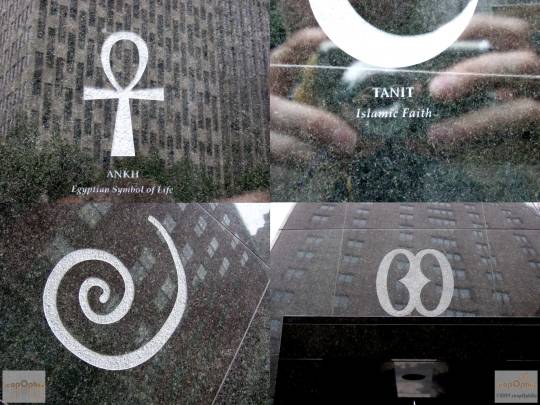
scopOphilic_micromessaging_960 - scopOphilic1997 presents a new micro-messaging series: small, subtle, and often unintentional messages we send and receive verbally and non-verbally.
#scopOphilic1997#scopOphilic#digitalart#micromessaging#streetart#graffitiart#graffiti#Manhattan#nyc#photographers on tumblr#original photographers#ArtistsOnTumblr#2007#African Burial Ground#ANKH#Egyptian Symbol of Life#TANIT#Islamic Faith#granite#brown#black#white
83 notes
·
View notes
Text

Carthaginian Hoplite
#art#illustration#design#digital art#drawing#character design#hoplite#historical#history#carthage#punic#hellenic#tanit
10 notes
·
View notes
Text
Diosa Tanit , s.V-III a.C necrópolis Puig des Molins, Ibiza
Construida en cerámica presenta un collar de cuentas vitreas y pendientes de oro.
Cultura punicoebusitana
Tanit era una diosa muy venerada en Cartago, relacionada con los ciclos lunares, las cosechas y la fertilidad. Su culto se extendió por las zonas de influencia púnica.

#arqueologia#historia#culture#history#archaeology#travel#tanit#diosa#goodess#punic#cartago#ibiza#necropolispuig#tanith
7 notes
·
View notes
Text

Phoenician funeral stele from Carthage Moon-Goddess Tanit with sun & moon above her Tunis, Bardo National Museum
45 notes
·
View notes
Text
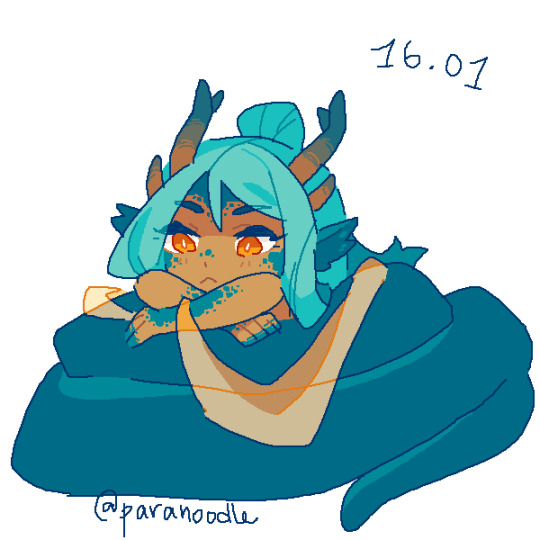
apparently today is Appreciate A Dragon Day
23 notes
·
View notes
Text






Marseille, Vieille-Charité, Musée d'Archéologie Méditerranéenne.
tributaire mède, bas-relief en albâtre - Khorsabad, palais de Sargon, 730 av. J-C.
stèles, l'une avec le signe de Tanit, l'autre avec un chapiteau hathorique - Tophet de Carthage, 200 av. J-C.
déesses en terre cuite - Suse, IIème millénaire av. J-C.
scène de combat, bas-relief en albâtre - Khorsabad, palais de Sargon, 730 av. J-C.
stèle, signe de Tanit - tophet d'El Hofra, Constantine, Algérie, 220-25 av. J-C.
tarif des redevances sacrificielles, en punique - trouvé à Marseille, IVe s. av. J-C.
#marseille#vieille-charité#musée d'archéologie méditerranéenne#archéologie#babylone#mésopotamie#khorsabad#médie#mède#albâtre#sargon#suse#susiane#stèle#carthage#tanit#hathorique#tophet#divinité#el hophra#constantine#algérie#tunisie#punique#massalia
7 notes
·
View notes
Text
Tanit was the most important goddess who represented a mother goddess, life, & fertility.

TANIT ERA LA DIOSA MÁS IMPORTANTE QUE REPRESENTABA A UNA DIOSA MADRE, LA VIDA Y LA FERTILIDAD.
(English / Español)
Carthage was founded by the Phoenician city of Tyre in the 9th century BCE, and along with many other cultural practices, the city adopted aspects of the religion of its founding fathers. Polytheistic in nature, such important Phoenician gods as Melqart and Baal were worshipped in the colony alongside new ones such as Tanit. These, in turn, were spread to new Punic colonies around the ancient Mediterranean while in the other direction gods from neighbouring cultures were incorporated into the Carthaginian pantheon. Temples were built in their honour, ceremonies were overseen by a priestly class, sacrifices were made to appease them, and their imagery appeared on ships, coins, and in the arts.
------------------------------------------------------------------------------
Cartago fue fundada por la ciudad fenicia de Tiro en el siglo IX a.C. y, junto con muchas otras prácticas culturales, la ciudad adoptó aspectos de la religión de sus padres fundadores. Era de carácter politeísta y en la colonia se veneraban dioses fenicios tan importantes como Melkart y Baal junto a otros nuevos como Tanit. Estos, a su vez, se difundieron en las nuevas colonias púnicas alrededor del antiguo Mediterráneo, mientras que por otro lado, los dioses de las culturas vecinas se incorporaron al panteón cartaginés. Se construyeron templos en honor a ellos, las ceremonias eran supervisadas por una clase sacerdotal, se hacían sacrificios para apaciguarlos y sus imágenes aparecían en barcos, monedas y en el arte.
Source: www.worldhistory.org
4 notes
·
View notes
Text
Photos from Ancient Carthage (814BC-146BC)
Ancient Carthage was a city state in the time of antiquity that exists in present day Tunis, Tunisia in North Africa. It was founded around the year 814BC by Phoenician (Punic) settlers who emanated from the Levant, in modern day Lebanon, Syria & Israel. The Phoenicians were a civilization that spoke a Semitic language & engaged in a society that primarily was interested in trade & commerce throughout the Mediterranean Sea.
The Phoenicians settled in trade colonies throughout the Mediterranean basin in not only their West Asian homeland but Europe & North Africa all the way to modern day Spain & Morocco. Their best-known trade colony was Carthage or “Qart-hadast” which meant “New City” in their language. This was strategically located where modern Tunis sits. It was located on a strip of land that allowed shelter from storms on the North African coast & was well placed near the center of the Mediterranean Sea & its trade routes crisscrossing between the east & west. The settlers who established Carthage were Phoenicians colonists from the city of Tyre in modern Lebanon, one of the three major city-states of Phoenicia alongside Sidon & Byblos.
These Phoenician colonists reached Tunisia around 814 BC & like their other settlements in Libya & elsewhere they had to deal with the native populations, in this case the Berber or Amazigh peoples who inhabited North Africa from Morocco to Libya. Originally a daughter city under the rule from Tyre, they gained autonomy when Tyre & the rest of Phoenicia fell under the control of the Neo-Assyrian Empire around 650 BC. From that point on Carthage became not only an independent city-state but established a mostly sea-trade based empire or thalassocracy. It became a flourishing metropolis & dominated the Western Mediterranean for centuries.
Carthage was a monarchy until about 480 BC before becoming a republic & their sea-based commercial empire presaged the later Italian sea-based republics of Venice & Genoa over a thousand years later. Their complex system of governance, language (Punic or Western Phoenician dialect), religion & other cultural aspects are still only partially understood in the modern era due to biased contemporary foreign sources & little surviving local record.
At their peak they controlled North Africa’s coast from Libya in the east to Morocco in the west. Much of Spain, the Balearic Islands, Malta, half of Sicily, all of Sardinia & Corsica. They fought wars with the Berbers who lived inland in North Africa along with the Greek city-states that settled in Sicily & southern Italy & likewise engaged in trade with these peoples. The Phoenician settlers (Carthaginians) were often not numerous enough to make up their whole military strength. Though the Phoenicians dominated their navy while their land-based military consisted of mercenaries from the Berbers of North Africa, Greek hoplites, Sardinians, Italo-Sicilians, Corsicans & the Celts & Iberians of Spain and the Balearic Islands to complement their own elite Phoenician infantry, the Sacred Band of Carthage.
Eventually over the course of the three Punic Wars with the emerging Roman Republic, Carthage lost its power & prestige. Though it produced several military leaders of tactical & strategic renowned, the most famous being Hannibal Barca (247BC-181BC) who crossed the Alps & invaded Italy from the north inflicting several defeats on the Roman army on their native Italian soil but he was never able to take Rome itself. Eventually attrition & the threat of a Roman counterattack against Carthage itself forced Hannibal to leave for his North African home. He was eventually defeated by the Romans & finally in the Third & final Punic War, Rome destroyed ancient Carthage in 146 BC, it is said they tilled the surrounding fields in salt so that no new crops could grow & the threat of Carthage would never rise again. The Romans eventually rebuilt Carthage & included the city as their own within the Africa province of their empire. It flourished again as a center of Roman trade but eventually fell to Germanic invaders such as the Vandals before being retaken by the Byzantine Empire in the 6th Century AD before falling again to the Arab Muslim invaders in the 7th century as Islam spread across North Africa. Medieval Carthage continued as a residential town but eventually the modern city of Tunis began encircling its original Punic & later Roman ruins...

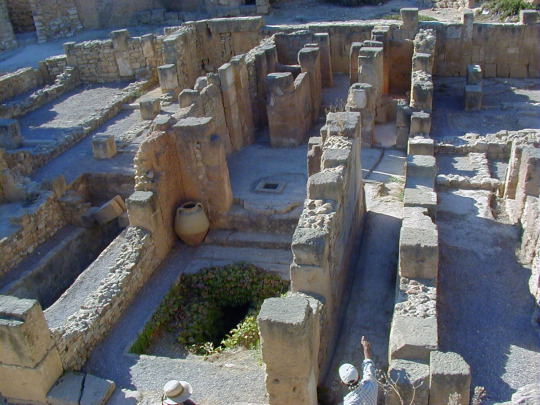
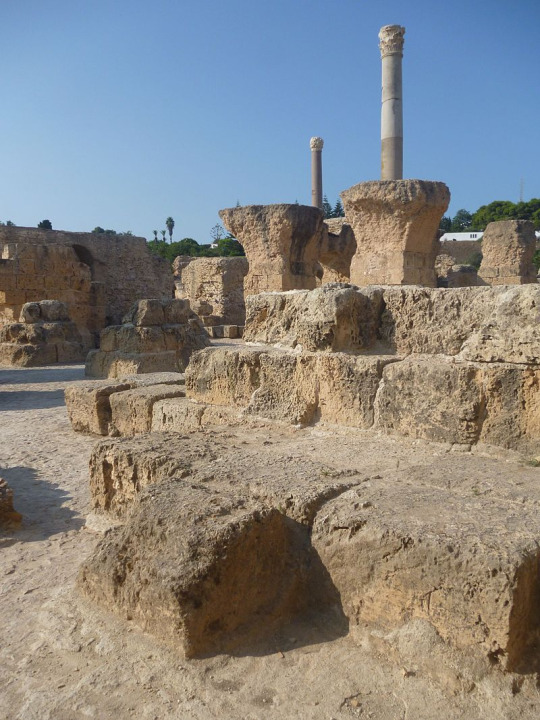
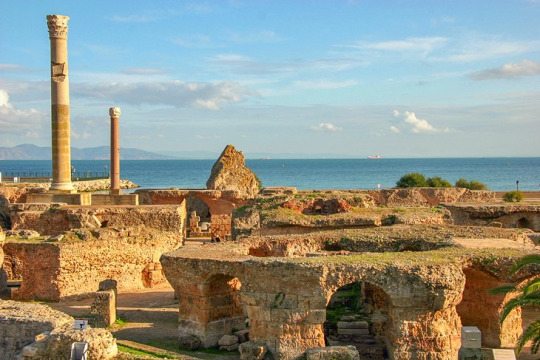

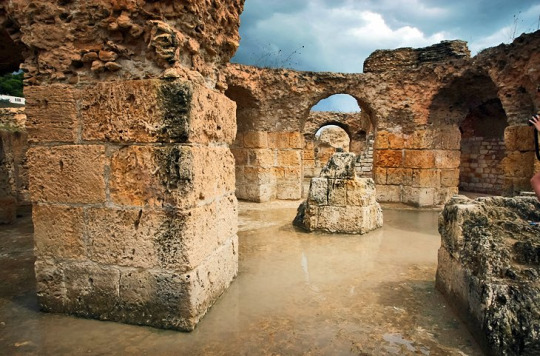
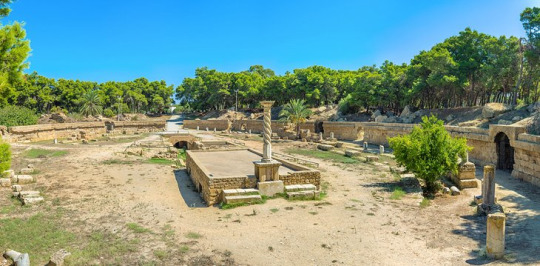

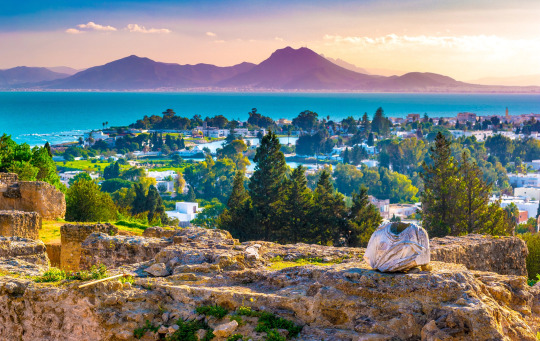
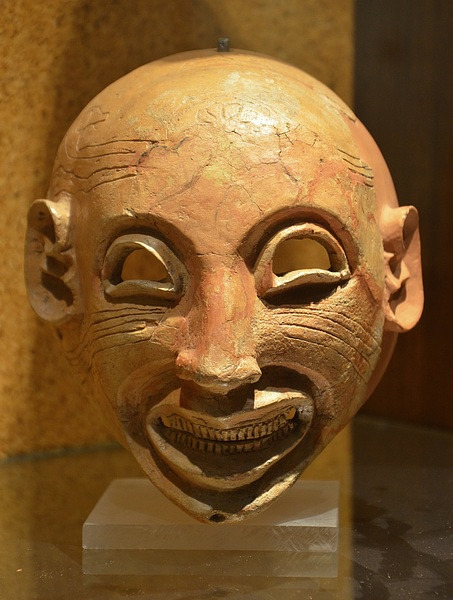
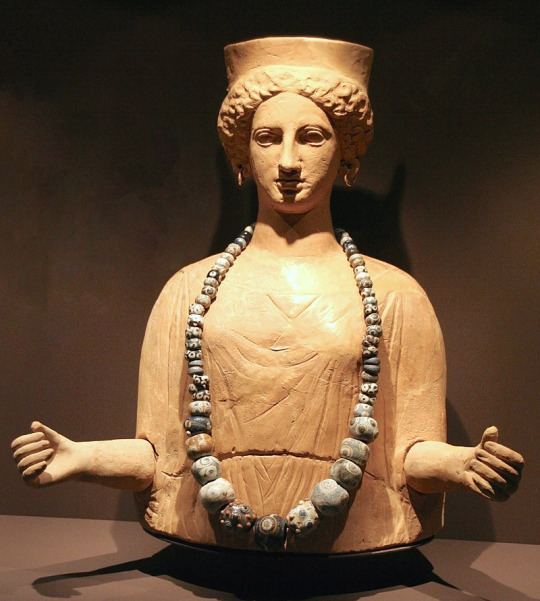
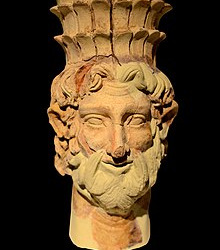
#antiquity#ancient carthage#punic wars#hannibal#ancient rome#tunisia#north africa#ancient world#ancient history#carthage#rome#mediterranean#phoenicia#ancient phoenicia#tyre#baal hamon#tanit#dido#ancient ruins
24 notes
·
View notes
Text

Stèles puniques avec des représentations de Tanit ainsi que différents de ses attributs, parfois avec de belles inscriptions puniques (01/05/2024), musée de Cirta, Constantine.
4 notes
·
View notes
Text
Last time, when I posted the vague translation of an article about Tanit, a lot of people were surprised and said they were unaware of the goddess' very existence... So for those who are interested into the Punic mythology, I will list here some points one can find literaly by going to the French Wikipedia article about the Punic religion. (I precise French Wikipedia because the French and English Wikipedias sometimes do not have the same information)
(Again this is not exact or definitive stuff, just a little bit of intro ; a "little taste for the beginning of the research")
The Punic religion/mythology is the one of the city of Carthage. You know? The Great Carthage, the famed rival and enemy of Rome, Hannibal and all that. It also extended to all the cities and regions which were under Carthage's influence and control. (So we are talking the coasts of Northern Africa, the south of Spain and Italy, and other adjacent areas)
The Punic mythology is derived from the Phoenician mythology, hence why several Phoenician gods can be found back among the Punic pantheon - but differences between the Phoenician and Punic religions are attested as early as Carthage's foundation.
Despite the conquest and destruction of Carthage by the Roman Empire, the religion still went on - it is attested as having been performed during the 3rd and 2nd centuries BCE, and some theorize the Punic gods might have stayed "alive" as late as the fourth century CE.
One of the big problems when studying the Punic religion is to differentiate historical facts from biased accusations, because the Roman authors were known to heavily caricature and demonize its rites. Notably the Romans regularly accused the people of Carthage of monstrous infant-sacrifices, and the archeological discoveries are quite ambiguous as to whether there were indeed sacrifices of children or not...
As I said before, the Punic gods were born when the Phoenician gods were brought over to Northern Africa and acquired there specific traits, while also interacting with other local religions. The Punic gods are dominated by the figure of the "superior god" that is Ba'al Hammon (or just Ba'al), and which is inherited from the Phoenicians - though the Punic Ba'al and the Phoenician Ba'al are quite different from each other. Astarte, Ba'al paredra (female companion) in the Oriental religions, is also present in the Punic religion but in a secondary and "weakened" way - she was rather replaced/fused with an emblematic goddess of the Punic religion, Tanit, the paredra of the Punic Baal (and even called the "face of Baal").
Astarte was preserved as a goddess of fecundity and war, though she seems to have been moved to a "secondary" situation. Other Phoenician gods preserved include Eshmun, god of medecine, and Melkart, a god symbolizing expansion and enrichment. Melkart was quite notably fused/equated with the Greek figure of the hero-god Herakles.
Most of the gods of the Punic pantheon (except for Baal, which oversaw and dominated them all) acted as "poliads", aka as city-gods. Tanit is considered to have been the goddess of the city of Carthage, while Melkart was the patron of the city of Gades (Cadiz), and Sid the tutelar deity of Sardinia (hence his alternate name "Sardus Pater").
Ba'al Hammon, the leader of the Punic gods, was born of the meeting between the Phoenician Baal, and the Egyptian Ammon, whose cult had spread to Lybia and almost most of Northern Africa (Ba'al Hammon notably had the same ram-association as Amon). This dual god, who symbolized fire and the sun, was later, in the Roman era, assimilated with Jupiter - and it is attested that the Punic Baal (Baal-Amon-Jupiter) still had a worship when Christianity started establishing itself.
The Punic religion had some "imported" cults too. Most notably, during the Greco-Punic wars, the Punic civilization adopted the worship of Demeter and Kore, as goddesses of fertility and harvest. This was due (according to Diodorus of Sicily) to the destruction of these goddesses' temple at Syracuse in 396 BCE: after this, all sorts of disasters plagued the army of Carthage, and so the city adopted the worship of the goddesses in an attempt at appeasing them. Some archeological clue also indicate that the cult of Isis might have existed at Carthage - but it is not firmly confirmed.
The Punic gods were usually invoked when an important historical event had to take place: for example before any military campaign, they were invoked, and if a sea-expedition was successful, the gods were thanked. The Punic religion was a state-business, since there was not cleric/secular division in the Carthagian lifestyle. The priests did not have any direct or open political power, but they had an enormous influence over society - and the members of the higher ranks of the religious hierarchy all belonged to the most powerful families of Carthage.
There was an entire "society-within-a-society" linked to the temples, since each temple had its own set of barbers, slaves and servants. Sacred prostitution was also common within many Punic temples: this prostitution involved both male and female prostitutes, and to be one could be either a definitive, lifetime state, or a temporary function. There was also a whole commerce of ex-votos the followers of the god could buy in buildings linked to the temples - in fact this commerce was most developped by the sea-shores and in coastal cities, where foreigners could bring donations and offerings or receive ex-votos. In fact, the offerings of the temples (usually meat and other resources for consumption) played a big part in the economical model of Carthage. There were specific "prices" and "tariffs" when it came to offerings: we have preserved several "price lists" indicating which type and amount of offering was needed depending on the request or demand. Could be sacrificed vegetables, food, objects, but also small and big animals (usually birds for "small" and cows for "big"). The offering was shared between the priest, the offerer and the god, and then a commemorative stone was set.
A big debate point is the tophet of Carthage, the sacred area dedicated to Tanit and Baal. The thing is we have very little clues and knowledge about this area, outside of vague and repetitive texts found on the ex-votos, thanking "Tanit Pene Baal and Lord Ba'al Hammon". The problem is that some Roman writers and historians (but not all - which adds oil to the fire) said the child-sacrifices took place within this area, identifying these rituals to the sacrifices of Moloch. Some child bones were found in urns, but given no violent cause of death could be found, it is unknown if this indeed was a place of child-sacrifices, or a necropolis for dead children.
It is established that, in the Punic religion, there was a difference between the state-religion, dominated by Carthage, and a folk-religion expressed through the amulets and the talismans protecting against demons and diseases. The folk-religion was heavily influenced by the Egyptian mythology: the Egyptian god Bes was a very popular folk-god of the Punic civilization, charged with protecting both the living and the dead.
We also know a few more details of religious practices, though they stay obscure... For example we know there was a worship of the ancestors within the houses of Carthage, but we don't know how, why, when. Similarly we know the Punic civilization forbade the eating of pork - a diet restriction still efficient by the early 4th century... But why, we don't know. We also do know the Punics seemed to have a belief in life after death, because even though the funeral rites involved incineration, there were mortuary chambers decorated like a house of the living, filled with offerings of food and drinks, and perfumed before being sealed. The position of the corpse was sometimes similar to the "Oriental" rites inherited from the Phoenicians, but other times influenced by the funeral practices of the Berbers (which were one of the population with influential interactions with the Punic civilization).
Numerous elements of modern-day Northern African/Muslim cultures were directly inherited from the Punic religion. For example, the khamsa amulet is widely recognized as being a leftover of the Punic amulets ; similarly, modern-day Tunisia regularly uses the "Symbol of Tanit" (it is used within the cinematographic prize of the "Gold Tanit"). The Algerian and Tunisian expression "Baali agriculture" to designate a non-irrigated agriculture is explained as a reference to the Punic Baal, the same way the Tunisian ritual of the Umuk Tangu/Ommek Tannu (Oumouk Tangou, Ommek Tannou, "Mother Tannou/Tangou"), a rain-invocation for periods of droughts, is a survival of the goddess Tanit (of whom Tangu/Tannu are alternate names). Some go as far as to theorize that the "star and the crescent", symbol of the Muslim religion ever since the Ottoman empire popularized it, might have been influenced by the Punic religious symbols...
#punic religion#punic mythology#punic gods#gods of carthage#carthaginian gods#carthage#baal#ba'al hammon#tanit
13 notes
·
View notes
Note
As for my sweet baby Tanit her flower is a daffodil (joy, happines, revival and new beginnings). Her gemstone is fluorite, mostly because I associate Tanit with the colours. Her taste is white chocolate with red pepper. Her animal is a jackal.

She's gonna guide you to the Other Side and back!
#whispering-jabberwocky#replies#Tanit#is white chocolate with red pepper an actual thing??#or just a Tanit thing?#:D
6 notes
·
View notes
Text
Lady of Elche/Dama d’Elx/ Dama de Elche

Limestone sculpture of a woman uncovered near Elche, Spain, 5th-4th century BC
from The National Archaeological Museum, Madrid
3K notes
·
View notes